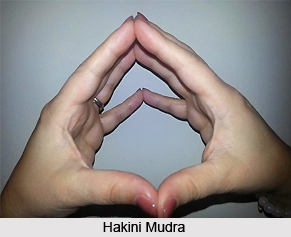 Hakini mudra is a hand gesture practised to increase mental balance and enhance intelligence. This mudra can do wonders if practised properly. It is said that this mudra, which is named after the God Hakini, helps boost thinking and concentration. It is believed that this gesture is linked to the Third-Eye Chakra, where imagination and intuition are located. Science has also attached researched implication to Hakini mudra. Researchers have determined that this mudra can promote the cooperation between the right and left brain hemispheres.
Hakini mudra is a hand gesture practised to increase mental balance and enhance intelligence. This mudra can do wonders if practised properly. It is said that this mudra, which is named after the God Hakini, helps boost thinking and concentration. It is believed that this gesture is linked to the Third-Eye Chakra, where imagination and intuition are located. Science has also attached researched implication to Hakini mudra. Researchers have determined that this mudra can promote the cooperation between the right and left brain hemispheres.
The process of practicing Hakini mudra is to place all the fingertips together while remembering something. The process also follows directing the eyes upward and placing the tip of tongue on gums while inhaling, and let the tongue fall again while exhaling. In order to perform mental work, crossing of feet is not required. The sitting position is with closed eyes facing west wards.
Steps of Hakini Mudra
Hakini mudra is regarded as one of the interesting mudras that can be practised anywhere and at any time. The steps of this mudra are very simple to perform.
•Hold the hands up in front so that the palms face each other, but do not touch.
•Bring the fingertips of right hand towards the fingertips of left hand so that they are touching each other.
•Move gaze upwards.
•Inhale while placing tongue against the roof of mouth.
•Exhale while allowing the tongue to relax.
•Practice these steps several times.
Benefits of Hakini Mudra
•Hakini mudra is recommended in memory training and management courses. It is said to open access to the right hemisphere, which is where the memory is stored.
•This mudra also improves and deepens respiration and the brain profits from it as well.
•Hakini mudra is used to recharge the energy of the brain.
•Helps to improve concentration.
•Promotes the co-operation between the right and left brain hemispheres.
•It also helps in creation of a sense of calmness which opens the mind to clearer thinking.
•Hakini mudra is beneficial for children suffering from Autism.




















